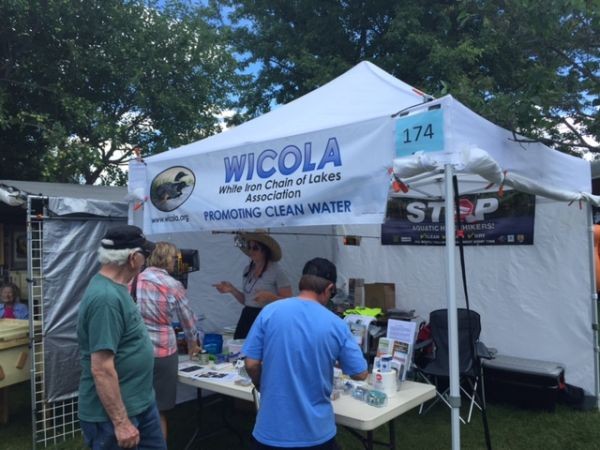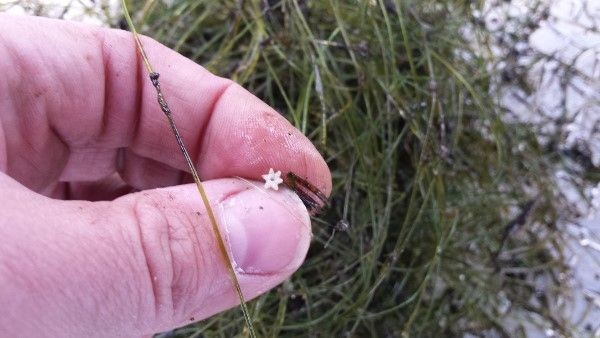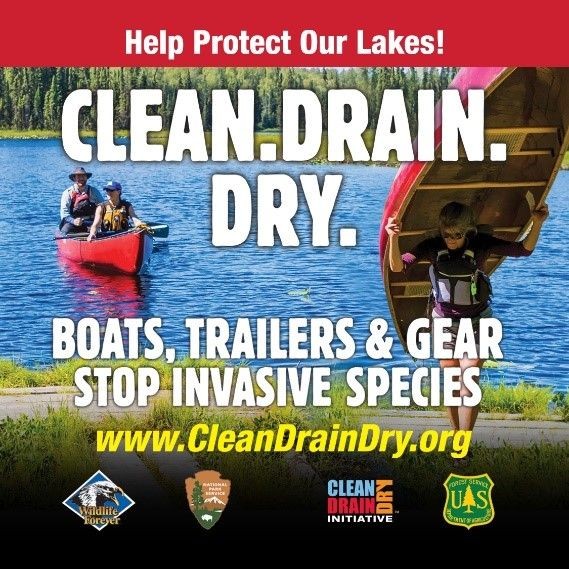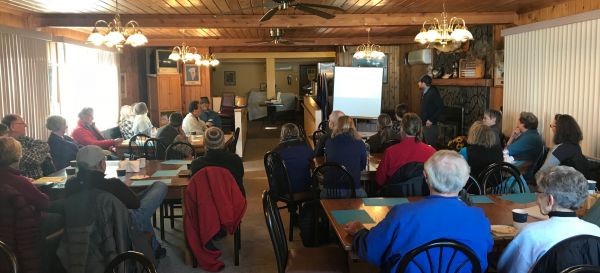Many lake property owners may wonder if a permit is required to cut, clear, or eliminate the vegetation (trees and shrubs) along their lakeshore.
According to the Minnesota DNR, your property may be within a shoreland zoning district that prohibits intensive vegetation clearing in shore impact zones, bluffs impact zones, and steep slopes.
Steep slopes average 12 percent or more over a 50 foot horizontal distance. The shore impact zone is half the distance of the structure setbacks. The bluff impact zone encompasses slopes over 30 percent over a 25 foot rise, and includes all applicable setbacks.
Intensive clearing is allowed outside of these areas for residential lots. The DNR recommends to preserve and enhance vegetation near the shore to the greatest extent possible to reduce soil erosion and the movement of sediment into the water.
Limited clearing and trimming of trees and shrubs in the shore impact zones, bluff impact zones, and steep slopes is allowed to provide a view to the water from the principal dwelling and to accommodate the placement of stairways, landings, lifts, picnic areas, access paths. Check with your city or county planning/zoning authority to verify the limitations on vegetation removal for your property.
From the Lake County’s “The Property Owners Resource Guide” & “Comprehensive Plan and Land Use Ordinance #12, effective June 23, 2017”;
Alteration of vegetation is regulated.
Selective removal is allowed to provide a view corridor to the water and also to accommodate placement of stairways, picnic areas, access paths, watercraft access, etc. However, that removal must leave sufficient cover to screen cars, dwellings, and other structures from view from the water.
Sec. 7.08 Shoreland Alterations: Alterations of vegetation and topography shall be regulated to prevent erosion into public waters, fix nutrients, preserve shoreland aesthetics, preserve historic values, prevent bank slumping and protect fish and wildlife habitat.
Removal of Natural Vegetation:
- A vegetation management plan will be required for total vegetation removal of over ten thousand (10,000) square feet or twenty-five percent (25%) of lot area, whichever is lesser.
- Selective removal of natural vegetation shall be allowed in order to provide a view corridor to water; however, such removal shall leave sufficient cover to screen cars, dwellings, and other structures from view from the water and selective vegetation removal shall be allowed in order to accommodate the placement of the following additional uses: placement of stairways and landings, picnic areas, access paths, livestock watering areas, beach and watercraft access, permitted water-oriented accessory structures.
- In no case shall intensive vegetative clearing be allowed within the Shore Impact Zone (50 feet from the vegetation line)
From St. Louis County’s “Shoreline Vegetation Alterations Administrative Standards”;
Minimum Standards for Vegetation Alteration: The removal of natural vegetation within the shore impact zone is subject to the following standards:
- There shall be limited removal, pruning and trimming of trees to provide a view to the water from the principal structure site and to accommodate the placement of stairways, landings, recreation areas, access paths and watercraft access areas.
- One access path is allowed per residential lot or parcel and shall not exceed a cleared width of 12 feet.
- One shoreline recreation area that includes the access path shall be allowed within the shore impact zone per lot, parcel or group of contiguous non-conforming lots in the same ownership. The area shall not exceed 15 feet in depth by the width in the Vegetation Alteration Maximum Width of Alteration Allowed Table.
- Authorized removal of vegetation shall be accomplished using human means (for example, hand, ax, or saw) and shall not be done by heavy equipment.
- Screening of structures and vehicles as viewed from the water during leaf-on conditions shall not be substantially reduced. The maximum view corridor between the shore impact zone and required principal structure setback shall be 50 feet or 30 percent of the parcel width, whichever is less
For assistance in permit requirements in St. Louis County;
- Technical Assistance Toll Free: 1-800-450-9777
- Duluth Government Services Center, (218) 725-5000
- Virginia Northland Office Center, (218) 749-7103
For assistance in permit requirements in Lake County (Two Harbors);
- Environmental Services Planning & Zoning, (218)-834-8327 Fax: (218)-834-8365
Questions can also be sent to;
- The Minnesota DNR; This email address is being protected from spambots. You need JavaScript enabled to view it. .
Important: This article is not intended to be a definitive guide on permit requirements. Rather it is intended to offer some basic insight into permits and to demonstrate that permits are required for some basic shoreline alteration. Permits are designed to protect our lakes and the lifestyle they provide. Permits are “tools” to sustain and enhance our lakes and shorelines so that residents and visitors can enjoy. Permits and Approvals may be required from federal, state, and local units of government, including the U.S. Army Corps of Engineers, watershed districts, water management organizations, counties, townships, and cities.






 Twin Metals officials said plans to locate the processing site east of Birch Lake differs from previous proposals. Before, the company had planned to build it south of the Ely airport and west of Birch Lake. Company officials said mine employees will access the underground mine from the processing site. The facility would be built on about 100 acres of land owned by Twin Metals. As far as storage for its tailings, Twin Metals said about half of its tailings will be stored in the proposed underground mine as permanent cemented backfill, while the remaining tailings will be stored adjacent to Northshore's Peter Mitchell Mine, southwest of Babbitt.
Twin Metals officials said plans to locate the processing site east of Birch Lake differs from previous proposals. Before, the company had planned to build it south of the Ely airport and west of Birch Lake. Company officials said mine employees will access the underground mine from the processing site. The facility would be built on about 100 acres of land owned by Twin Metals. As far as storage for its tailings, Twin Metals said about half of its tailings will be stored in the proposed underground mine as permanent cemented backfill, while the remaining tailings will be stored adjacent to Northshore's Peter Mitchell Mine, southwest of Babbitt.  Size and Location: Kangas Unit 1 (134 acres and Unit 2 (111 acres) are at Township 62N, Ranges 11/12W, Sections 25, 30, 31, and 36.
Size and Location: Kangas Unit 1 (134 acres and Unit 2 (111 acres) are at Township 62N, Ranges 11/12W, Sections 25, 30, 31, and 36. 
 “Clean Drain Dry unites all Minnesotans. Together, we are making a difference. Over 95% of the public comply with state AIS laws. That’s incredible and proof that what we’re doing is working to keep our lakes and streams healthy”, said Pat Conzemius, Executive Vice President of Wildlife Forever. “We are grateful for WICOLA working to educate the importance of AIS prevention.”
“Clean Drain Dry unites all Minnesotans. Together, we are making a difference. Over 95% of the public comply with state AIS laws. That’s incredible and proof that what we’re doing is working to keep our lakes and streams healthy”, said Pat Conzemius, Executive Vice President of Wildlife Forever. “We are grateful for WICOLA working to educate the importance of AIS prevention.” Residents who want to take action steps to increase their safety but are unsure about how to start can now find the information, and the inspiration, they need to organize and accomplish wildfire risk reduction projects in their community. Ely is teaming up with the National Fire Protection Association (NFPA) and State Farm® for the fifth annual Wildfire Community Preparedness Day event on May 5, 2018, which helps communities prepare for and work together to reduce their risk of wildfire damage.
Residents who want to take action steps to increase their safety but are unsure about how to start can now find the information, and the inspiration, they need to organize and accomplish wildfire risk reduction projects in their community. Ely is teaming up with the National Fire Protection Association (NFPA) and State Farm® for the fifth annual Wildfire Community Preparedness Day event on May 5, 2018, which helps communities prepare for and work together to reduce their risk of wildfire damage.
